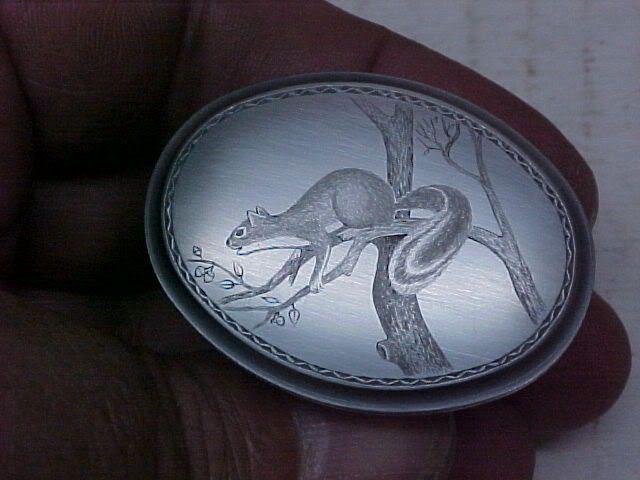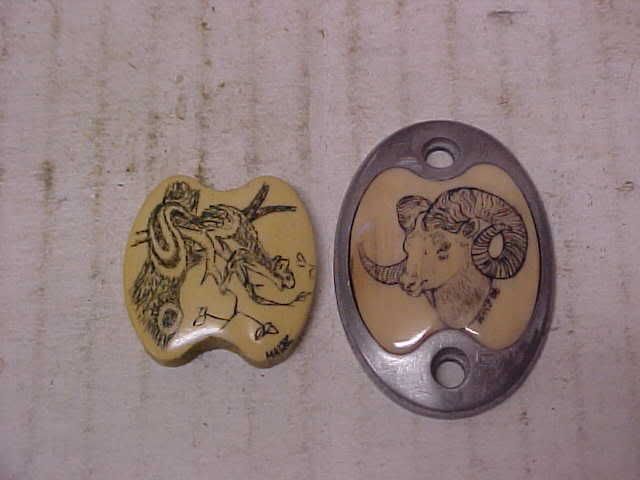I guess I'm one of those whiners who can't do better myself and am too poor to commission an all-out effort, sorry about that(grin). But I know what I like and what I consider good work.
The finest engraver of my acquaintance is a master of the hammer-&-chisel method and strives to make $30/hr. He has no other pension and does this as his sole means of support, been that way for ~40 years now. Some of his work is among the finest I've seen while other examples aren't quite so good, but I can ASSURE EVERYONE that his worst piece is immeasurably better than what we've seen here. Here's a small example of the differences I'm speaking of.

Now take a look at some scrimshaw that I did by taking a 'lift' from the source image. Notice the much poorer quality of the cuts as compared to the steel engraving.

It's quite obvious that the scrimming is far less smoothly and expertly done than the engraving, yet the layout and essential design are identically pleasing. Worth the same money? Hardly.
BTW the study of the history of art will soon reveal an essential truth: the use of over-stylized images such as are found in bestiaries and heraldry is an avoidance technique. Using these images allows the artist (or rather, in many cases, the craftsman) to avoid having his product's appearance compared to reality. He can use his imagination to create a assembly-result without, in many cases, actually having to DRAW anything! Some artists call this 'derivative'.
Much of my own art may be considered 'derivative' but I call it 'lack of imagination'.
Even the earliest cave paintings attempt to replicate reality in the animals' shapes and the fluidity of their portrayed motion.
I'll return to the original thought: if I can't tell it's a lion then it's not representative and so how can it be pleasing?
Regards, Joe